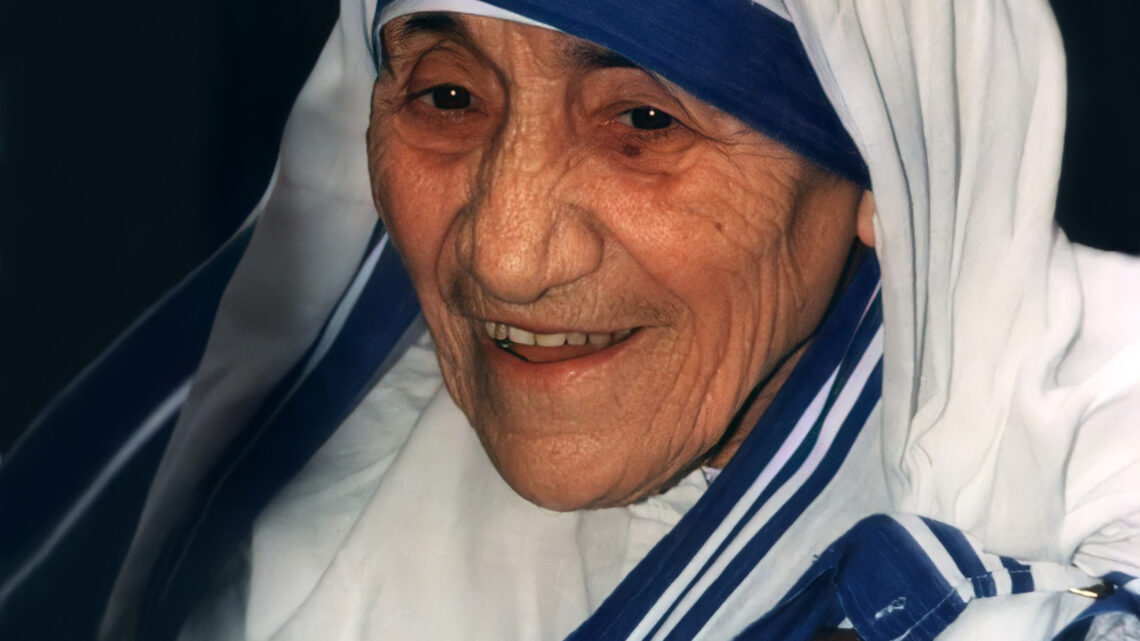
Mother Teresa Biography: Obituary, Age, Net Worth, Siblings, Parents, Height, Awards
Mother Teresa, known in the Catholic Church as Saint Teresa of Calcutta, is celebrated worldwide for her unwavering commitment to serving the poorest of the poor.
Born Agnes Gonxha Bojaxhiu on August 26, 1910, in Skopje, Macedonia, she dedicated her life to humanitarian work and founded the Missionaries of Charity in 1950.
Trending Now!!:
Her journey began with a profound calling to help those in need, which she described as a “call within a call” during a train ride in 1946.
This moment of inspiration propelled her into the slums of Calcutta, where she provided care and compassion to the sick, orphaned, and dying.
Profile
- Full name: Agnes Gonxha Bojaxhiu
- Nickname: Mother Teresa
- Date of birth: August 26, 1910
- Age as of 2024: 114 years (deceased)
- Gender: Female
- Place of birth: Skopje, Macedonia (then part of the Ottoman Empire)
- Nationality: Albanian-American
- Profession: Nun, Missionary, Humanitarian
- Height: N/A
- Parents: Nikola Bojaxhiu and Dranafile Bojaxhiu
- Siblings: One brother (Lazar) and one sister (Agnes)
- Spouse: N/A (remained unmarried)
- Children: N/A (dedicated her life to service)
- Relationship status: N/A
- Religion: Roman Catholic
- Ethnicity: Albanian
- Net worth: $0
Early Life and Education
Mother Teresa (114 years as of 2024) was born on August 26, 1910, in Skopje, Macedonia. Her parents were Nikola and Dranafile Bojaxhiu, who were of Albanian descent.
Mother Teresa was the youngest of three children; she had an older brother named Lazar and an older sister named Agnes. Growing up in a devout Catholic family, she was influenced by her parents’ strong faith and commitment to helping others.
At the age of twelve, she felt a strong calling from God to become a missionary. This conviction led her to leave home at eighteen to join the Sisters of Loreto in Ireland.
After completing her initial training there, she was sent to India in 1929. Upon arriving in Calcutta (now Kolkata), she began teaching at St. Mary’s High School for girls.
While teaching for nearly two decades, Mother Teresa witnessed the extreme poverty and suffering outside the convent walls. The harsh realities faced by the people living in slums deeply affected her and ultimately led her to seek a more direct way to serve those in need.
In 1946, during a train journey from Calcutta to Darjeeling for a retreat, she experienced what she referred to as her “call within a call.” This moment inspired her to leave the convent and devote herself entirely to serving the destitute.
In 1948, after receiving permission from church authorities, she donned a simple white sari with blue borders—a symbol of her new mission—and ventured into Calcutta’s slums.

Personal Life
Mother Teresa remained unmarried throughout her life and dedicated herself entirely to her mission of service. Despite not having children or a traditional family life, she formed deep bonds with those she served and her fellow sisters in the Missionaries of Charity.
Her commitment to helping others often came at great personal cost. She faced numerous challenges while establishing her order and caring for the poor. Despite these hardships, Mother Teresa maintained an unwavering focus on her mission.
Her life was characterized by simplicity and humility; she lived among those she served rather than seeking comfort or wealth for herself. Mother Teresa often emphasized that love and compassion were at the heart of her work.
Career
Mother Teresa’s career as a humanitarian began earnestly after she founded the Missionaries of Charity in 1950. The order aimed to provide free services to the poorest individuals regardless of their background or beliefs.
Under her leadership, the organization expanded rapidly—establishing homes for orphans, leprosy patients, and those suffering from various ailments.
In addition to founding hospices like Nirmal Hriday (Place for the Pure Heart) for terminally ill patients, Mother Teresa organized mobile clinics and rehabilitation centres for drug addicts and alcoholics. She also opened schools for impoverished children and provided care for mentally disabled individuals.
Over time, Mother Teresa’s work attracted global attention; she received numerous awards recognizing her contributions to humanitarian efforts. Her dedication inspired many individuals worldwide who sought to emulate her example by engaging in charitable activities.
By her death in 1997, Mother Teresa had established hundreds of centres in over ninety countries, each dedicated to serving those most in need.
Awards
- Nobel Peace Prize (1979)
- Templeton Prize (1973)
- Ramon Magsaysay Award (1962)
- Jawaharlal Nehru Award for International Understanding (1986)
Net Worth
Mother Teresa, renowned for her selfless service to people experiencing poverty, founded the Missionaries of Charity, which received substantial donations globally. Estimates suggest that at the time of her death in 1997, the organization’s assets exceeded $100 million.
Despite this wealth, Mother Teresa took a vow of poverty and did not personally accumulate funds. The Missionaries of Charity continues to operate worldwide, focusing on charitable activities and serving the underprivileged.
Death
Mother Teresa died on September 5, 1997, in Kolkata, India. Her death marked the end of an era defined by compassion and service; millions mourned her loss globally. Following her passing, tributes poured in from around the world, honouring her tireless dedication to helping those less fortunate.
Controversy
Despite widespread admiration for Mother Teresa’s humanitarian work, some controversies have emerged regarding aspects of her life and mission. Critics have raised concerns about various elements associated with her practices and beliefs throughout her career.
One significant point of contention arose from claims regarding inadequate medical care provided at some facilities run by Missionaries of Charity—allegations suggested that patients received insufficient pain relief or treatment options during their stays.
Critics argued that this approach stemmed from Mother Teresa’s staunch opposition to abortion and contraception; they contended that such beliefs influenced how care was administered within these institutions.
Additionally, some have criticized Mother Teresa’s close association with controversial political figures—including former Indian Prime Minister Indira Gandhi—arguing that these relationships conflicted with her purported commitment to social justice.
In later years, questions emerged surrounding transparency regarding funding sources for Missionaries of Charity projects; critics demanded greater accountability concerning how donations were utilized within their operations.
Furthermore, certain scholars have critiqued what they perceive as an overly romanticized portrayal of poverty promoted by Mother Teresa, asserting that this perspective may inadvertently perpetuate systemic issues rather than effectively address root causes.
Despite these controversies surrounding aspects related specifically to practices employed within facilities operated under her direction, Mother Teresa remains revered by many as an enduring symbol representing compassion toward humanity’s most vulnerable populations worldwide.
Social Media
- N/A
NOTICE!! NOTICE!! NOTICE!!
DISCLAIMER!! : Every Biography and Content Published On TheCityCeleb are For Knowledge Reason. Don't Hesitate to Reach Out for Any Correction || Suggestion || Copyright!!CORRECT@thecityceleb.com


